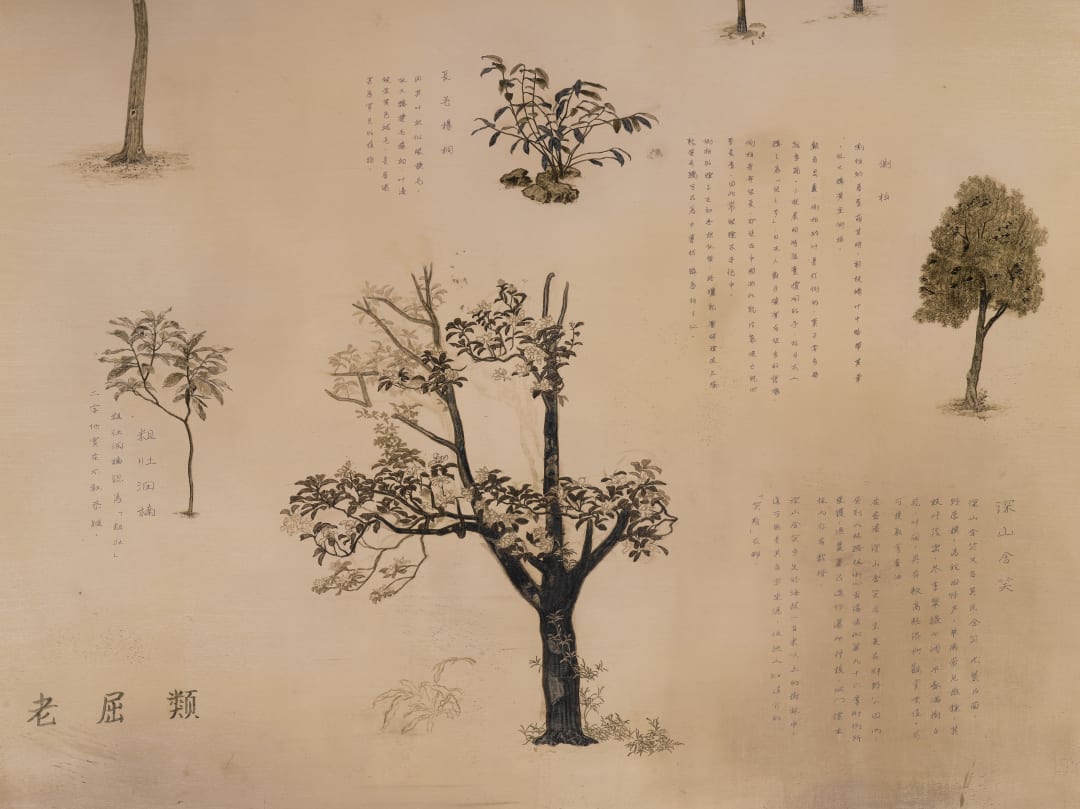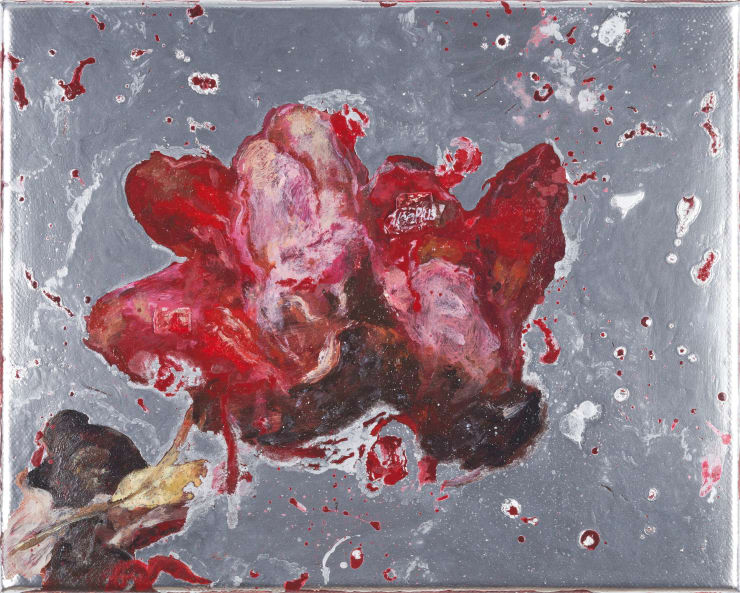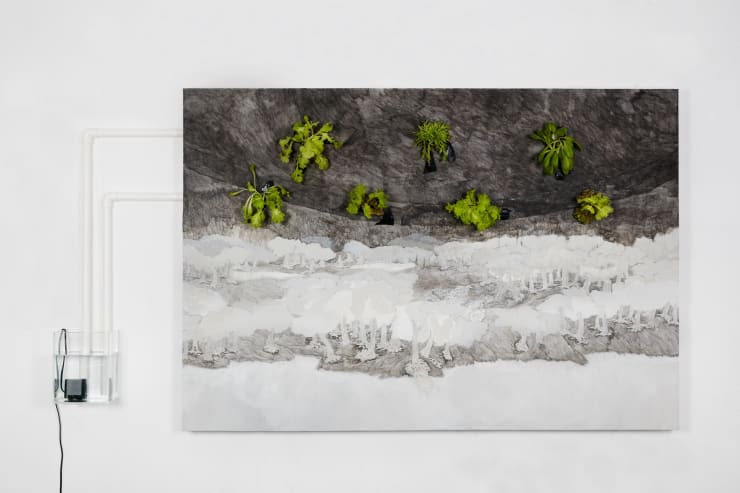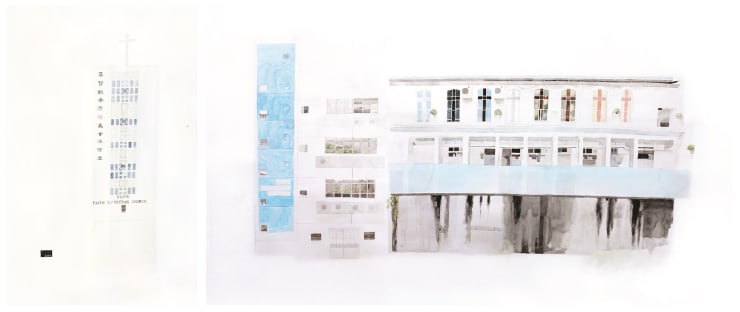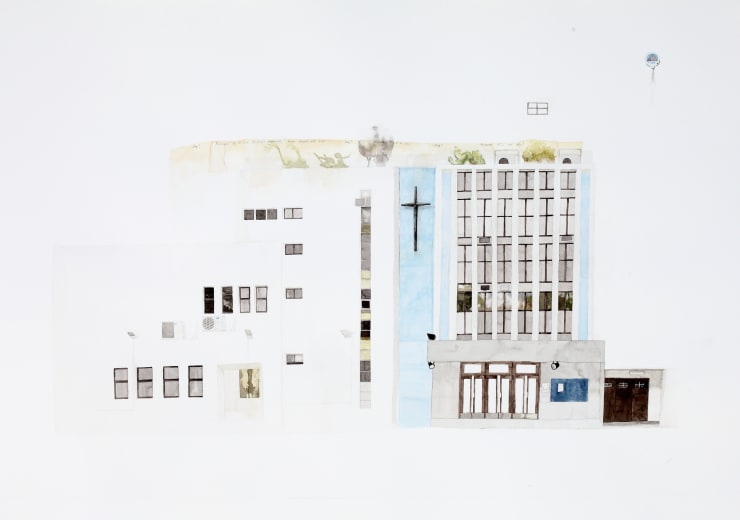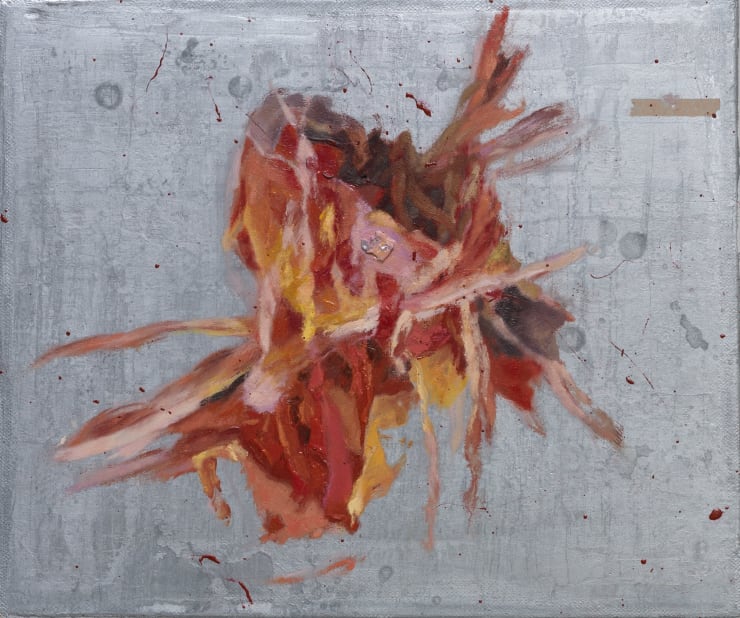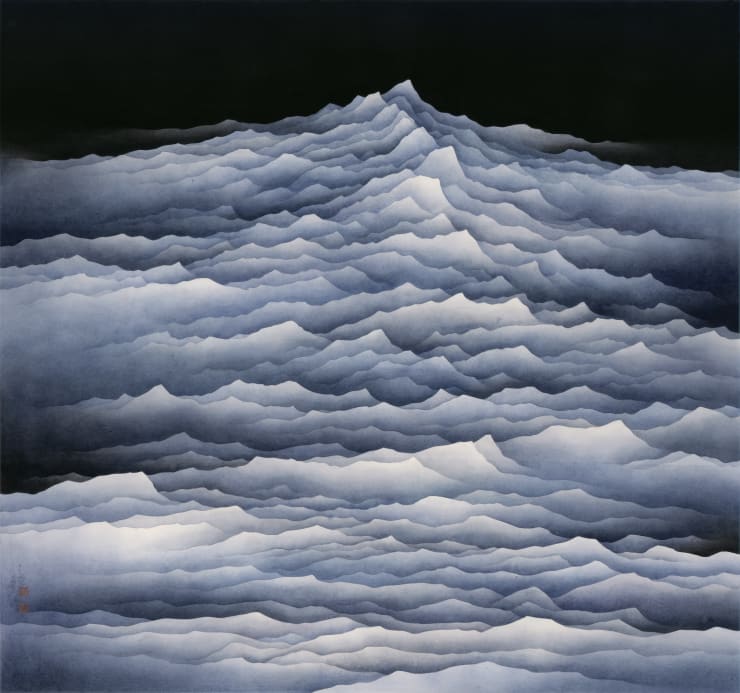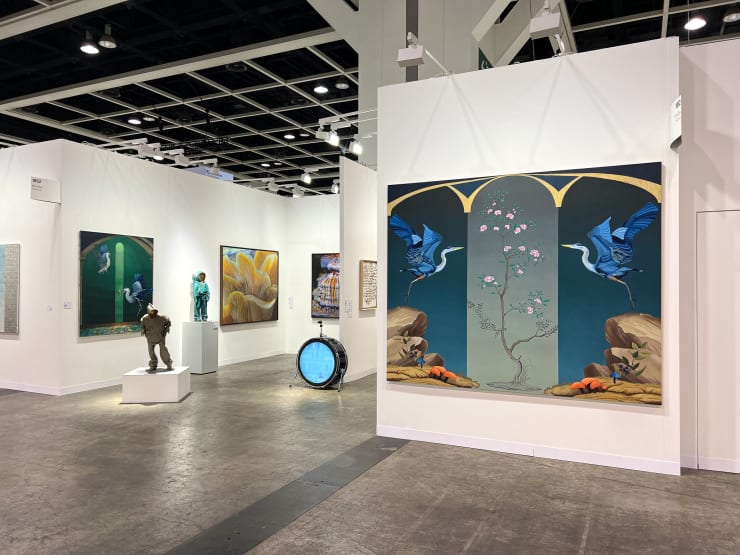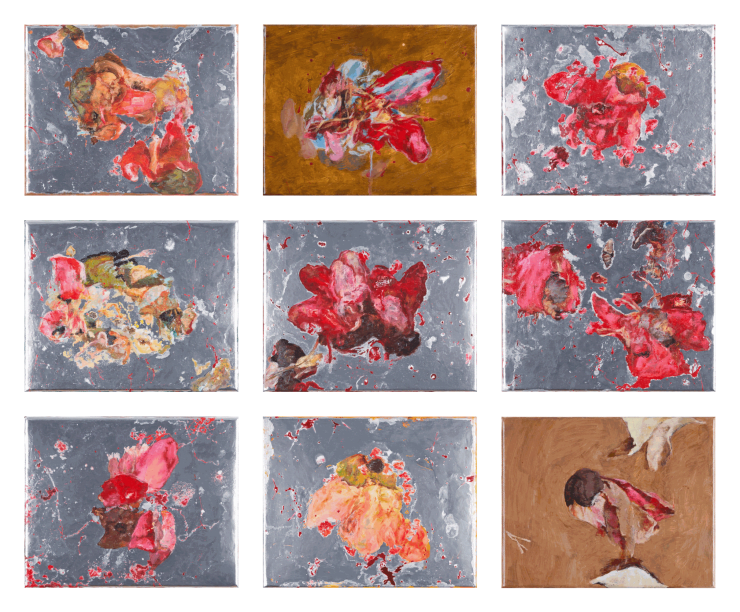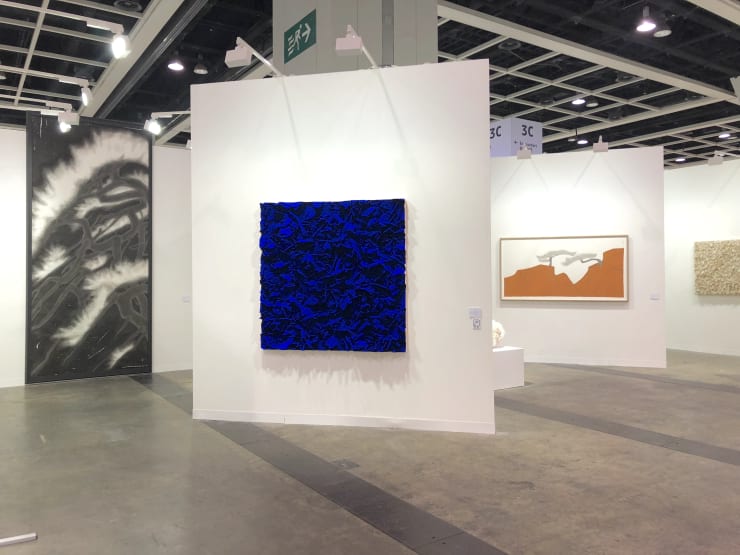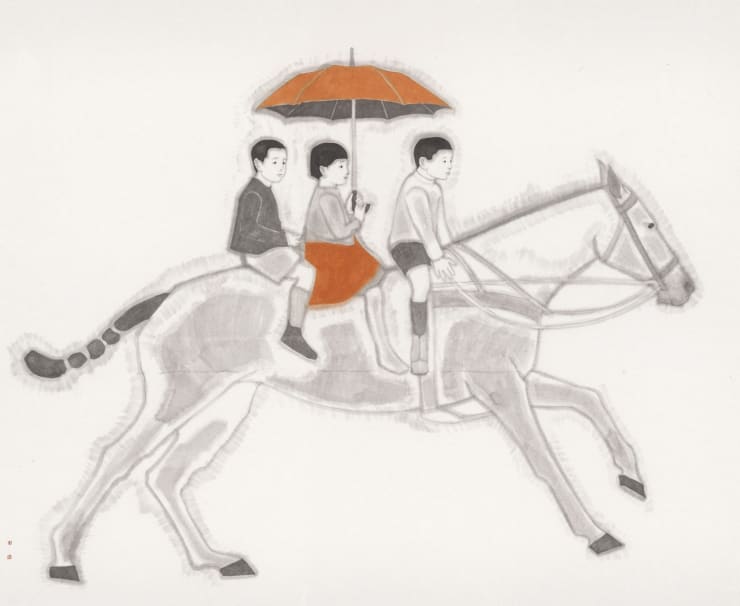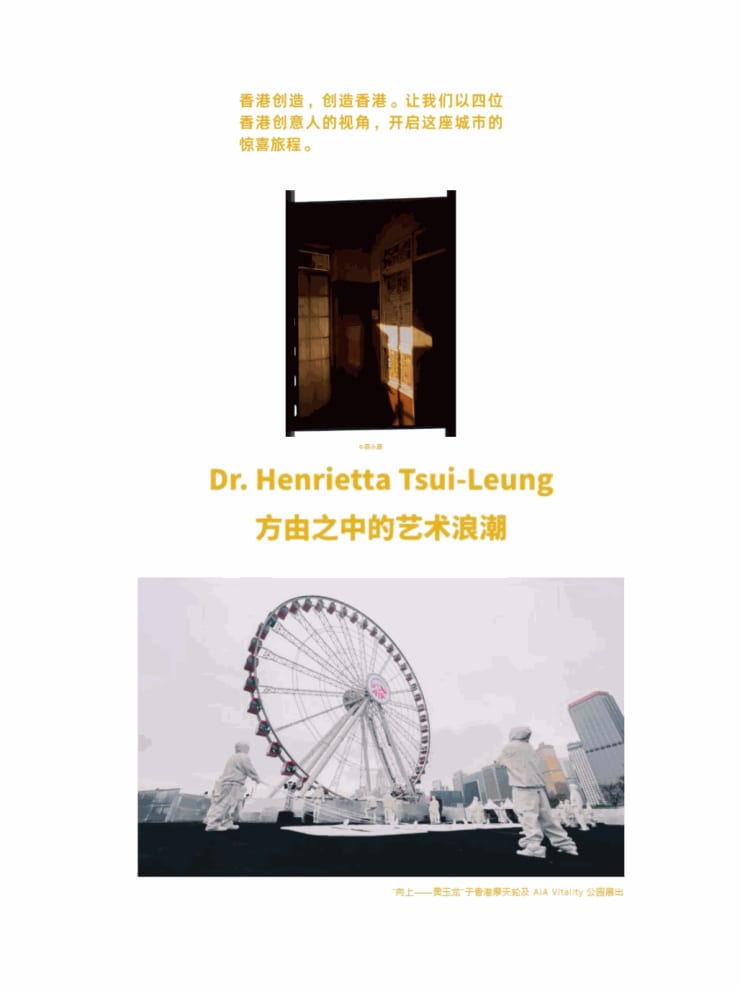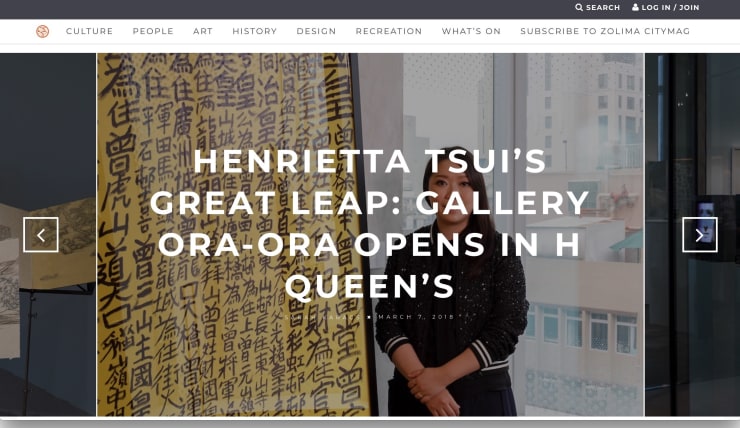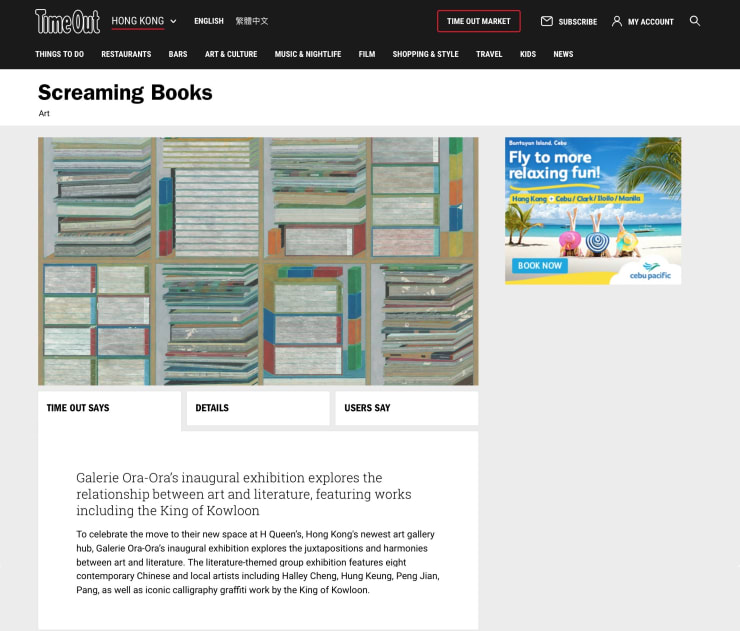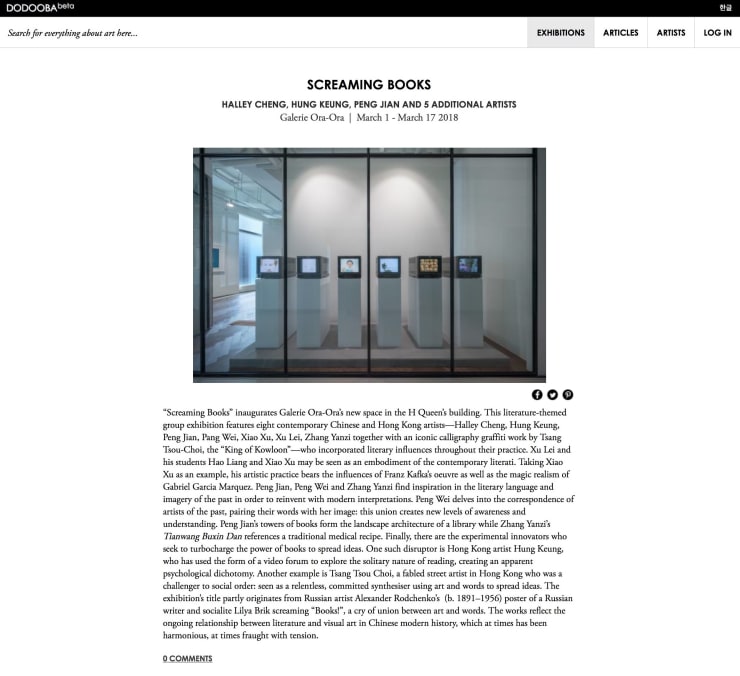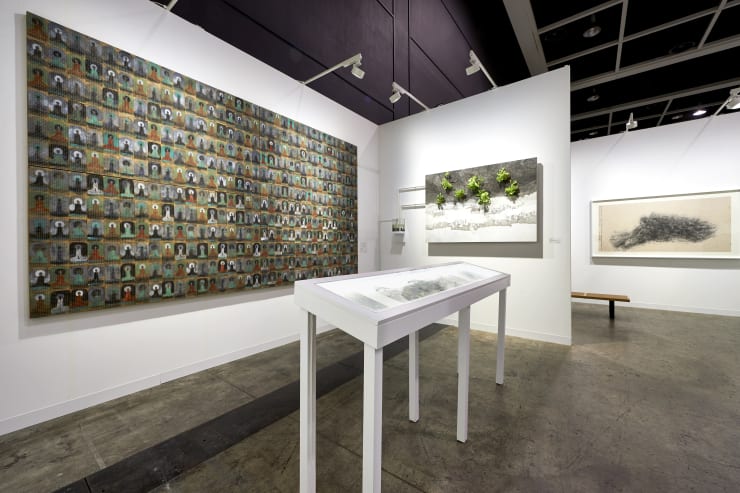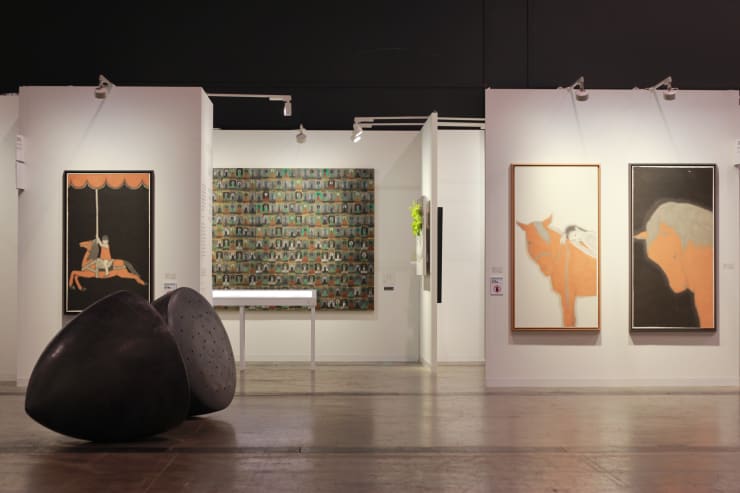Halley Cheng 鄭哈雷
Background and Early Exhibitions
Winning the Hong Kong Young Artist Grand Prize in 2012, followed by a solo show at Art Basel Hong Kong one year later at the age of 27, Cheng’s recognition has been unhesitating. His combination of irreverence grounded in classical traditions, his blending, blurring and re-casting of ancient and modern, seasoned with an ethos of directness, honesty and enquiry, made him an immediate force on the Hong Kong arts scene.
He was educated at school and at university in Hong Kong, graduating in Fine Arts from the Chinese University of Hong Kong in 2008, obtaining a master’s degree in Visual Arts, Studio and Extended Media from the Hong Kong Baptist University five years later.
He is avidly collected by both western and Chinese individuals, and his works may be seen in corporate settings too, forming part inter alia of the collections of Bank of China (HK), Philippe Charriol Foundation, Cliftons Ltd, Grand Hyatt Hong Kong, The Peninsula Shanghai Waitan Hotel.
Notable series of works include Cerulean, Lui’s Solution of Concocted Herbal, and his solo show at Art Basel Hong Kong 2013, in which surprising combinations of ancient and modern (such as Michael Jackson in a landscape of Song dynasty painting) were arranged and harmonized on plywood boards.
The first person in his family to become an artist, Halley Cheng experiments, sets new directions and applies varied solutions to his distinct themes.
The Tree as an Object, a Theme and a Person
Cheng’s work is diverse both in media and subject matter, and yet there are themes which are constant. Trees have become a symbolic thread running through Halley’s oeuvre. Addressing his Cerulean series: “Schools are like trees; they show greater strength and a greater depth of longevity as they age and mature. It’s not something we can find in other architecture.” Later, his hydroponic works (such as Carnivorous Island, exhibited in 2016’s Futuristic Ink exhibition at the Liang Yi Museum, which formed part of that year’s Hong Kong Culture Festival) brought real life vegetation bursting through canvas to form a self-feeding, vital loop, a commentary on independence versus interdependence. Larger pieces in mixed media including A Tree in Jordan Valley Park, A Tree in Austin Road (380cm x 360cm) and many of his Lui’s Solution of Concocted Herbal series – all depict trees.
The tree links the viewer to three strong themes of Halley’s work, one being his relationship with (and reaction to) classical Chinese painting, the second being his mounting frustration with the political situation in Hong Kong, and the third his fascination with scenes which may be construed as surreal or unbelievable. Playfully sketching trees as part of his Lui’s… Concocted Herbal series, Cheng is able to combine classical motifs from imperial medical texts with what he describes as “dubious descriptions from the internet.” This jokey juxtaposition of ancient and modern has the tree as its mascot.
His emphasis on life-size trees transfers an imprint of his own personal life force into classical language. As the artist controls the world in his painting, the life-size tree becomes an insertion of himself into the empty space, a contemporary arrival into a classical scene.
Thus the tree becomes both a symbol of eternality and of modernity, architectural and personal; stolid yet bursting with life. In the artist’s words: “When I paint the trees, I am responding to the core values and symbols of Chinese paintings. Chinese paintings have a formula, a language which it is possible to learn and even master, whether you are Chinese or not. It’s actually a universal language.”
Cerulean: Symbols of Permanence
His Cerulean series, described by Galerie Ora-Ora Co-Founder, Henrietta Tsui-Leung, as “nostalgic, poetic, comforting… with the power to invoke personal reflections,” documented those overlooked architectural mainstays of Hong Kong society: schools and churches. Here, in reaching at underappreciated symbols of social cohesion, Cheng subtly probed those points where the individual forms a first contact with their community, where collective and personal memories are shaped. The buildings appear in delicate watercolour form, permanent and yet ethereal, the gentle genesis of all social interaction. Universally recognizable and yet true to Hong Kong, the images were acclaimed by leading art critics such as John Batten, who wrote to Cheng: “Your paintings are strong and perfect as a centre from which to begin again.” In retrospect, we may say that Cerulean was the preliminary unveiling of Cheng’s ongoing and developing engagement with the social fabric of Hong Kong, using the schools and churches as a symbol of a starting point, a beginning, where open and fresh minds are brought to learn the knowledge, the experience, the prejudices and the techniques that they apply in all aspects of later life, professional, political and social.
Commenting on the choice of cerulean as the title of the exhibition and the predominant colour of a number of his paintings from the series, Cheng remarked, as if in commentary on this unique mix of personal and collective memory: “It seems that every school that we see could be represented by a colour. My favourite are those in cerulean, with walls that look as plain and austere as a monumental stone slab, as if all their rules and missions are trapped inside them. The primary and secondary schools that I went to were green… Yet I am not painting any green schools; I am honestly a bit tired of them.”
A Meditation on Fake News
Cheng’s most recent work, shown at Art Basel Hong Kong 2017, depicts surreal scenes which appear incredible, and yet are documented, hewn from the rock of real life. These paintings are about his more recent feelings – feelings that the world is marching in the same, perhaps ill-advised direction.
These paintings appear almost miniature beside A Tree in Austin Road, with the artist once again judiciously harnessing scale to assert the philosophy behind the work. Obviating the danger of scale swamping content, Cheng pulls the audience closer into an intimate space of horror or surprise.
In works such as Sport, where Parisian demonstrators are depicted serving a forehand volley on a teargas canister, or Inflatable Horror No. 1, where a decoy army tank is deflated by a grey figure before a sullen, tree-thick horizon, Cheng invites us to meditate on the flipside of that 2017 global phenomenon of “Fake News.” Questions are posed. Not all that horrifies us may be dismissed as fake. And just who is manipulating whom?
Uncertain Times: A Darkening of Tone
Beyond the global, it is the local, Hong Kong, atmosphere that affects him the most. The haunting image of Regina Ip in Woman in Coffin arguably demonstrates a creeping darkness in Cheng’s oeuvre. This work is the natural successor of his 2013 combinations of Transformers and ephemeral modern characters in classical settings, but the mood has evolved: “In Hong Kong we have a sense of insecurity about our future… and our present. This makes me think about uncertainty. And I represent this using extreme examples. Commenting on this evolution of his Hong Kong theme, he remarks: “Churches and schools are symbols of permanence, architectural mainstays with lasting qualities. When I was working on the churches and schools, I felt more calm… now I feel more frustrated.”
-
 Kapok Series No.1 木棉花系列1號, 2020
Kapok Series No.1 木棉花系列1號, 2020 -
 Kapok Series No.14 木棉花系列14號, 2020
Kapok Series No.14 木棉花系列14號, 2020 -
 Kapok Series No.27 木棉花系列27號, 2020
Kapok Series No.27 木棉花系列27號, 2020 -
 Kapok Series No.3 木棉花系列3號, 2020
Kapok Series No.3 木棉花系列3號, 2020 -
 Kapok Series No.9 木棉花系列9號, 2020
Kapok Series No.9 木棉花系列9號, 2020 -
 Inflatable horror no.1 恐懼泡沫1號, 2017
Inflatable horror no.1 恐懼泡沫1號, 2017 -
 Woman in the Coffin 棺材裡的女人, 2017
Woman in the Coffin 棺材裡的女人, 2017 -
 A Row of Plants Outside Mei Yin House, Shek Kip Mei Estate 石硤尾邨美賢樓對出一組植物, 2016
A Row of Plants Outside Mei Yin House, Shek Kip Mei Estate 石硤尾邨美賢樓對出一組植物, 2016 -
 The Carnivorous Island 嚥人島, 2016
The Carnivorous Island 嚥人島, 2016 -
 The Lui's solution of concocted herbal - Chinese cabbage 雷公炮製.菘菜, 2016
The Lui's solution of concocted herbal - Chinese cabbage 雷公炮製.菘菜, 2016 -
 The Lui's solution of concocted herbal - turnip 雷公炮製.蕪菁, 2016
The Lui's solution of concocted herbal - turnip 雷公炮製.蕪菁, 2016 -
 Lui's Concocted Herbal Solution - Arenga and Poplar 雷公炮製.桄榔子、白楊, 2014
Lui's Concocted Herbal Solution - Arenga and Poplar 雷公炮製.桄榔子、白楊, 2014 -
 Lui's Concocted Herbal Solution - The Categories of Metals and Stones 雷公炮製.金石部上, 2014
Lui's Concocted Herbal Solution - The Categories of Metals and Stones 雷公炮製.金石部上, 2014 -
 Coron, Palawan 科隆.巴拉望, 2013
Coron, Palawan 科隆.巴拉望, 2013 -
 Thailand Plants VS Michael at Hellfire Pass 泰國植物大戰麥可(地獄火道), 2013
Thailand Plants VS Michael at Hellfire Pass 泰國植物大戰麥可(地獄火道), 2013 -
 Faith Lutheran 深信, 2010
Faith Lutheran 深信, 2010 -
 Grace and Evangel 恩磐, 2010
Grace and Evangel 恩磐, 2010
-

Wild Lines
3 May - 7 Jun 2025Wild Lines symbolizes a yearning for unfettered expression and a borderless approach to artistic disciplines. We revisit and re-engage with the creations of Halley Cheng, Henry Chu, Huang Yulong, Juri...Read more -

Art Basel Hong Kong 2025
Wild Lines 26 - 30 Mar 2025Located at Booth 1B33, Ora-Ora’s exciting and varied presentation highlights Colombian master painter and sculptor Fernando Botero , whose famously rounded forms, joyous carnivalesque paintings, and sheer zest for life...Read more -

Never Describe a Sunset
13 Feb - 16 Mar 2025Ora-Ora is delighted to present Halley Cheng's solo exhibition 'Never Describe a Sunset'. In Cheng’s renowned 'Kapok series', the works centre on the theme of chance, capturing the fleeting moments...Read more -

A Wider Horizon
3 Oct - 16 Nov 2024Ora-Ora is excited to announce the upcoming exhibition, A Wider Horizon , featuring a stunning array of works from renowned artists Peter Doig and Rosamond Brown , alongside celebrated Greater...Read more -

ART BASEL HONG KONG 2024
BEYOND WORDS 26 - 30 Mar 2024Ora-Ora is pleased to announce an exciting line-up of artists for its forthcoming participation in Art Basel Hong Kong 2024. The chosen artists are Halley Cheng, Sophie Cheung, Henry Chu,...Read more -

Art Basel Hong Kong 2023
CUI BONO 21 - 25 Mar 2023Ora-Ora is pleased to announce an exciting line-up of artists for its forthcoming participation in Art Basel Hong Kong 2023. The chosen artists are Halley Cheng, Sophie Cheung, Henry Chu,...Read more -

Asia Now Paris 2022
Feux de Joie 20 - 23 Oct 2022Ora-Ora is pleased to announce its participation in the 8th edition of Asia Now , which takes place in Paris between 20-23 October 2022. This edition marks Ora-Ora’s (Booth H07)...Read more -

Kapok20
13 Mar - 29 May 2021Ora-Ora is delighted to present Kapok20 , a solo exhibition by Halley Cheng . The exhibition opens on March 13 until May 29, 2021. Centred on Cheng’s new Kapok Series...Read more -

Nature Speaks
19 Oct - 14 Nov 2018Galerie Ora-Ora is proud to present Nature Speaks. From the seventeenth century genius of Claude Lorrain and Nicolas Poussin, into the 19th Century with self-taught artist Winslow Homer and ground-breaking...Read more -

Art Basel Hong Kong 2018
Leap to Light 27 - 31 Mar 2018In 'Leap to Light,' Galerie Ora-Ora channels the opposing forces of the modern world into the springboard for forward momentum. Our artists will harness the power of the leap and...Read more -

Screaming Books
1 - 17 Mar 2018Galerie Ora-Ora’s opening show asserts the universality of art, and its role as a standard bearer for unbarriered, unfettered expression and understanding. Where words belong to language silos, imbued with...Read more -

Twist/Turn - Halley Cheng Solo Exhibition
10 Aug - 16 Sep 2017In subtle response to oppositional, fragmented positions, Halley Cheng investigates a city where the players may be caught in self-delusion. A theatre stage which is continually turning, twisting and changing,...Read more -

Art Basel Hong Kong 2017
Perceptions 23 - 25 Mar 2017In current society, our perceptions, as a reflection of the soul’s independence are often overlooked and marginalized, whether methodically silenced through self-censorship and peer pressure, or voluntarily surrendered to skin-deep...Read more -

INK ASIA 2016
15 - 18 Dec 2016Galerie Ora-Ora invites the visitor on a journey of celebration into the rich imaginations of our pioneering contemporary ink artists. Artists committed to actualizing their most modern, vivid dreams through...Read more -

Cloud Evolution
3 Nov 2016 - 9 Feb 2017“Cloud Evolution” is a thrilling, future-focused exhibition with a lively and experimental outlook. On display will be an illuminating installation by Hung Keung, a journey of introspection by Hanison Lau...Read more -

Art Basel Hong Kong 2016
Cha-Na 22 - 26 Mar 2016Cha-Na is the study of the instance, its nature, importance, reflections, iterations and incarnations. Philosophers believe the instance is sacred and has fundamental importance to understanding the existence of the...Read more -

Cha-Na
21 Mar - 23 Apr 2016For this year’s Art Gallery Night, Ora-Ora will present “Cha-Na” as a continuation of our exhibition at Art Basel Hong Kong 2016. Cha-Na is the study of the instance, its...Read more -

Fine Art Asia 2015
Chubby Comedy - Xu Hongfei 4 - 7 Oct 2015With fluid, vivid poses and buxom female bodies, world renowned sculptor Xu Hongfei’s “Chubby Women” sculptures convey a sense of exquisiteness, representing the beauty of freedom and revealing the powerful...Read more -

Art15 London
21 - 23 May 2015Ora-Ora participated at Art15 London from 21-23 May and the show was well received by both local and international audiences. We were delighted to stage the works of renowned Chinese...Read more -

Beyond The Zone - Hong Kong Artist Group Show
12 Mar - 2 Apr 2015Art should not be limited by spaces and boundaries, nor should it be restrained by rules and media. A pen, a piece of paper, a song, a life story, a...Read more -

START Art Fair
25 - 29 Jun 2014London's newest art fair, START drew to a successful close at the Saatchi Gallery on 29th June 2014. The fair was particularly international in scope: 46 galleries came from 21...Read more -

I Want to be Seen - Hong Kong Artist Group Show
14 May - 30 Jun 2014Living in a society derived of constant change, the youth of Hong Kong have also evolved, becoming more aware of their rights, their role and ultimately their identity. Through the...Read more -

Art Basel Hong Kong 2013
Halley Cheng Solo Exhibition 23 - 26 May 2013For the upcoming Art Basel HK 2013 held from 23rd to 26th May, Galerie Ora-Ora is most excited to showcase Hong Kong Young Artist 2012 Award winner Halley Cheng's latest...Read more
-
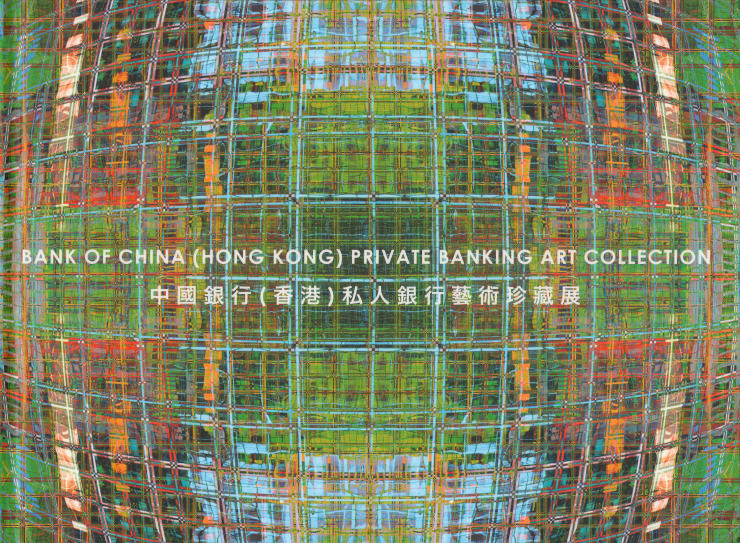
Bank of China (Hong Kong) Private Banking Art Collection
2012Hard Cover, 48 pagesRead more
Publisher: Ora-Ora International Limited
ISBN: 9789881864871
Dimensions: 28.5 x 20.5 cm -
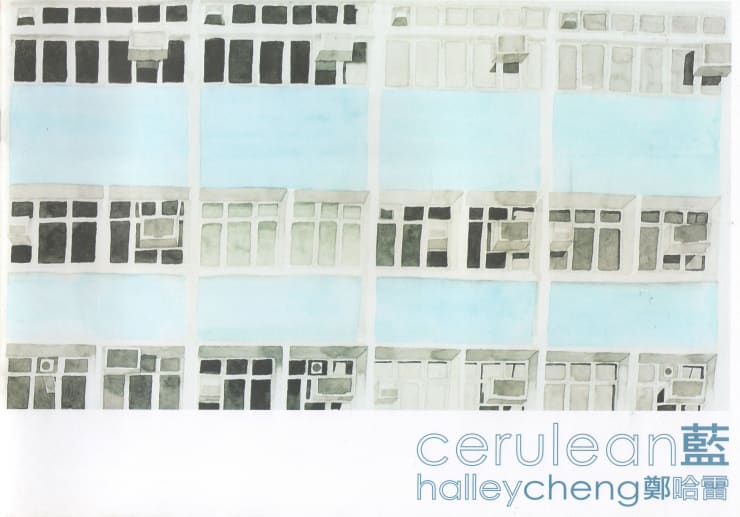
Cerulean - Halley Cheng
2010Soft Cover, 24 pagesRead more
Publisher: Ora-Ora International Limited
ISBN: 9789881864840
Dimensions: 28 x 20 cm -
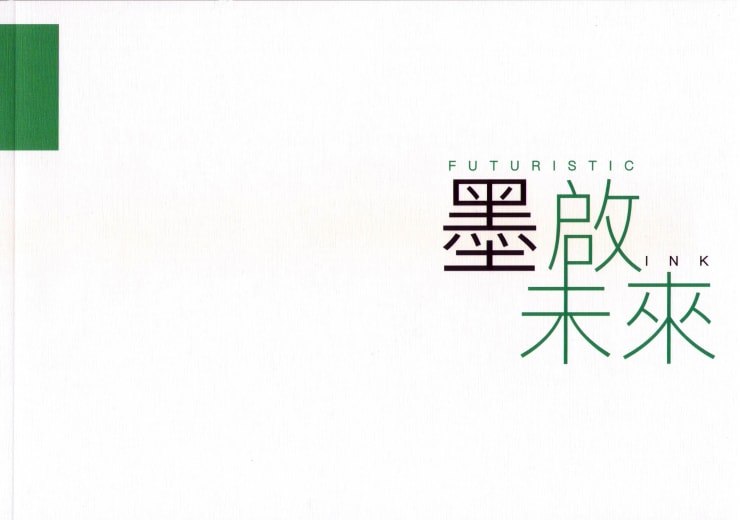
Futuristic Ink
2016Soft Cover, 48 pagesRead more
Publisher: Ora-Ora International Limited
ISBN: 9789881428615
Dimensions: 29.7 x 21 cm
-

四重视野,开启香港艺术周的灵感漫步
March 28, 2025Read more -

巴塞爾展推動藝術哲學湧現 索普 博特羅 畫作各具特徵
March 4, 2025Read more -

(Hong Kong Arts Month) The most concentrated art space in Central
March 16, 2018香港01 Once galleries were blooming in the city of Hong Kong, yet, normally with locations rather far away from the crowd. Ever since the inauguration...Read more -

Founder of Galerie Ora-Ora, Henrietta Tsui-Leung: It’s necessary to create a blooming industry for arts; and it’s a pleasure to compete with powerful rivals
March 16, 2018Artron Galerie Ora-Ora is proud to celebrate the opening of their new space in the H Queen’s building in March, where its new art space...Read more -

“Screaming Books”: Galerie Ora-Ora opens new space at H Queen’s, Hong Kong – in conversation with Henrietta Tsui-Leung
March 14, 2018Art Radar Founded by Henrietta Tsui-Leung ten years ago in Hong Kong, Galerie Ora-Ora is a research-based contemporary art gallery specialising in sculpture and works...Read more -

Henrietta Tsui’s Great Leap: Gallery Ora-Ora Opens in H Queen’s
March 7, 2018Zolima Citymag Ora Ora is one of just two Hong Kong-based galleries in the new H Queen’s art tower, which is welcoming leading exhibitors from...Read more -

Screaming Books
March 1, 2018TimeOut Galerie Ora-Ora’s inaugural exhibition explores the relationship between art and literature, featuring works including the King of Kowloon. To celebrate the move to their...Read more -

A purpose-built art building bringing the galleries together
March 1, 2018Sing Tao Daily Entering “Hong Kong Arts Month” with the upcoming significant exhibitions and events, lovers and readers for culture and arts have already filled...Read more -

"Screaming Books" – Halley Cheng, Hung Keung, Peng Jian and 5 Additional Artists
March 1, 2018DODOOBA “Screaming Books” inaugurates Galerie Ora-Ora’s new space in the H Queen’s building. This literature-themed group exhibition features eight contemporary Chinese and Hong Kong artists—Halley...Read more -

Galerie Ora-Ora latest show "Screaming Books" at H Queen's
March 1, 2018Artron News Galerie Ora-Ora is proud to celebrate the opening of the new space in the H Queen’s building with an inaugural exhibition that explores...Read more -

Local Talent: 7 Must-See Exhibitions At Hong Kong's Homegrown Galleries
February 20, 2018Hong Kong Tatler There’s more to Hong Kong’s art scene than the celebrated shows at big international galleries. Here’s our pick of upcoming exhibitions at...Read more -

‘Screaming Books’ at Ora-Ora, Hong Kong
February 8, 2018Blouin ArtInfo Galerie Ora-Ora is hosting an exhibition titled “Screaming Books” at its Hong Kong venue. Galerie Ora-Ora’s exhibition “Screaming Books” asserts the universality of...Read more -

The 20 Best Booths at Art Basel in Hong Kong
March 22, 2016Artsy After a stint in the fair's Insights section last year, Ora-Ora graduates to Galleries with a curated exhibition, 'Cha-Na.' Addressing ideas around instantaneousness and...Read more -

Art Big Bang: March
March 11, 2016Hong Kong 01 More than 3 billion years ago, the universe is but a micro singular dot of measureless weight. There is no starry sky,...Read more
